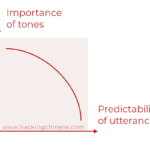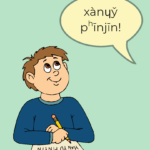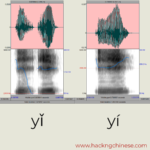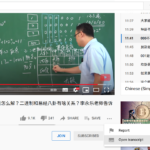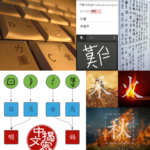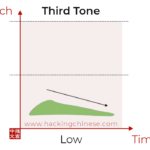Articles in the ‘Distinctively Chinese’ category Page 5
-
The importance of tones is inversely proportional to the predictability of what you say
Tones in Mandarin carry roughly as much information as vowels do, but still some people insist that tones are not very important, or even that native speakers don’t really use tones. Why is that and what can we learn from digging deeper into this misconception?
Read → -
Lost in transcription: Saylaw, Ice Island and Aristotle
Names of people and places can be quite different in different languages, sometimes so different that it causes headaches for second language learners. Do you know the world’s best footballer, Saylaw? What about Yàlǐshìduōdé? Or are you lost in transcription too?
Read → -
What’s the difference between Chinese pronunciation and Pinyin? Does it matter?
It’s not uncommon for both students and teachers to treat Chinese pronunciation and Pinyin as the same thing, but they are not, and thinking that they are can lead to certain problems.
Read → -
Learning the second tone in Mandarin Chinese
Many students of Chinese struggle with the third tone, but almost as many also have problems with the second tone. So how should the second tone be pronounced, and what are the most common learner errors?
Read → -
Chinese input methods: A guide for second language learners
There are many different input methods available for Chinese characters, including phonetic typing, non-phonetic typing, handwriting and speech recognition, but which method is best for people who study Chinese? And why?
Read → -
6 things in Chinese that are harder to learn than they seem
It’s hard to gauge the difficulty of something without having mastered it first. When something is easier than you think, that’s not very serious, but if you think something is much easier than it actually is, it can feel quite bad and decrease motivation. This article is about things that are harder than they seem when learning Chinese.
Read → -
Learning science in Chinese with 李永乐老师
李永乐老师 is a science teacher who has published many hundreds of video lessons online, for free. While the fast speech and speedy handwriting are a bit daunting at first, this is an excellent way of learning about science in Chinese. This article introduces 李永乐老师’s videos, along with a number of tips and tricks for how to make them approachable for students who want to be able to deal with science in Chinese.
Read → -
My best advice on how to learn Chinese characters
This is an overview of how to learn Chinese characters, including understanding how they work, how to learn to read and write them, as well as how to remember the characters you have learnt. Tools and resources related to characters are also covered!
Read → -
Learning the third tone in Mandarin Chinese
The third tone in Mandarin is the most mispronounced of all. It’s an essentially low tone, but many learners are unaware of this, partly because the way the tone is taught is flawed. Don’t think of it as a falling-rising tone, just think of it as a low tone!
Read → -
The most serious mistake students make when learning Mandarin pronunciation
Learning to hear and say the sounds of Mandarin can be tricky, but it’s made much more difficult by the way many students go about it. By focusing on reading over listening, they are making themselves a big disservice!
Read →
